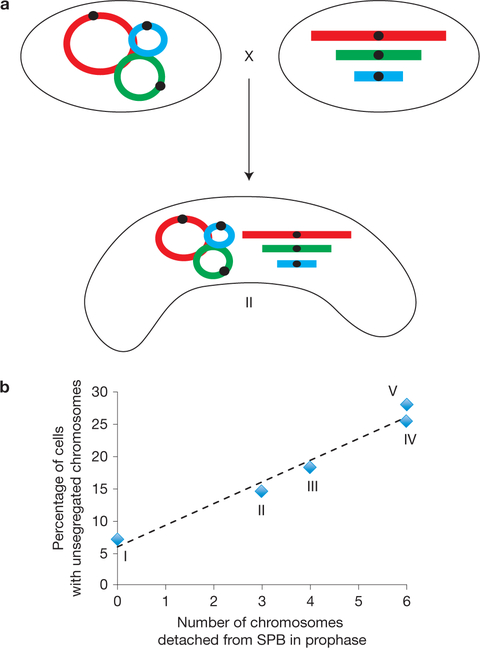Figure 7.
Linear correlation between number of telomeres participating in the bouquet and centromere attachment capability. (a) Mating of a strain harbouring circular chromosomes with a wt strain yields a meiocyte in which three (linear) chromosomes associate with the bouquet and three (circular) chromosomes do not. This meiocyte corresponds to point II in b. (b) Positive linear correlation between the number of chromosomes devoid of telomeres attaching to the SPB in a given cell and the percentage of cells with a nonfunctional centromere. Five strains were scored: (I) meiocytes derived from mating wt strains (all chromosomes participate in the bouquet; therefore, no chromosomes are detached from the SPB, n= 87); (II) meiocytes depicted in a, harbouring three linear (telomere-containing) and three circular (telomere-less) chromosomes (n = 82); (III) meiocytes derived from mating two circular + internal telo strains (see text) of opposite mating type (only two chromosomes participate in the bouquet; therefore, four chromosomes are detached from the SPB n = 94); (IV) as in III, but with deletion of bqt1+, which abrogates binding of the internal telomere to the SPB (no telomeres participate in the bouquet; therefore, six chromosomes are detached from the SPB, n = 55); (V) cells from mating of two circular chromosome-containing strains entirely lacking telomere sequences (no telomeres participate in the bouquet and therefore 6 chromosomes are detached from the SPB, n =25). The dashed line is a linear fit, R2 =0.87.

